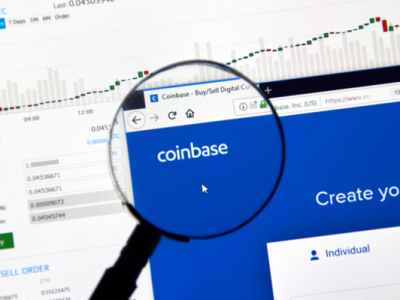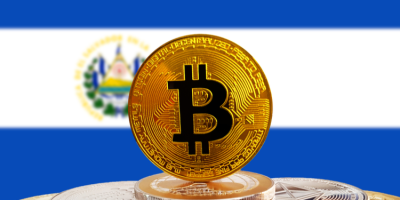ComputeCoin has announced that the company has secured $6.2 million in strategic funds under the leadership of Aves Air.
The network provides a decentralized infrastructure for Web3. This is interesting because although decentralization is one of the core aspects of Web3, the reality is that many Web3 applications are still deployed on a Web 2.0 infrastructure. This creates central errors and is contrary to one of the mantras of Web3. AWS is an example of such a company that operates a large part of the Web3 network.
ComputeCoin, which was only founded in 2018, has set itself the goal of making “global, distributed computing and storage performance generally available for all Web3 creators for easy use.“ We sat down with Dr. Max Li, the co-founder and CEO, to answer some of our questions.
BitcoinMag (BM): Which People often cite decentralization as a huge advantage of the metaverse and cryptocurrency in general. But given that so much Web3 infrastructure is built through centralized providers (e.g. AWS), is Web3 actually far more centralized than people think?
Dr. Max Li (ML) : Definitely! Many DAOs manage their communities on Discord, while OpenSea hosts NFT photos on GCP (a centralized platform that likes to stick to DMCA deactivations). Our time Website based on webflow, and guess where Webflow is hosted? AWS!
BM: What problems can arise from a large part of this ecosystem depending on centralized media?
ML: Basically, the main problem is that legacy cloud providers face significant limitations:
-
Computing power (coverage and latency): We have read that VR, AR and XR are part of the new Web3 standards. Most people do not understand that these experiences require continuous calculation requirements of an unprecedented scale in the history of mankind. Traditional providers do not provide enough performance; they are simply not able to meet these requirements. Latency and coverage issues will continue to ruin the experience of simultaneity and immediacy that is fundamental to the next generation of the Internet. For example, network latency can lead to motion sickness in VR players, which of course runs counter to the main goal of VR: to give a feeling of complete immersion and realism.
-
Price: For users, access to high-quality, low-latency, rich computing and storage performance is still too expensive. This dramatically affects the scalability of Web3 applications. Prices need to fall in order to maximize the prospects of Web3 and Metaverse applications on the market.
BM: We have seen with the success of BSC in the past that people sometimes like to sacrifice decentralization for ease of use, efficiency and low fees. Do you think this could be a trend for the future?
ML: Users will always consider ease of use as a priority. However, the crypto space is developing more and more ways to make it easier and more efficient to use in a decentralized way.
For example, there is a debate about how decentralized L2s will be on ETH, but the innovation of ZKPs and other privacy standards will pay more attention to these chains. For this reason, more TVL is blocked on layer 2s than on BSC.
In addition, projects with large ecosystems, such as Solana, Avalanche, etc., are connected by cross-chain bridges (i.e. interoperability) that allow users, miners and/or assets to move freely between these projects to facilitate decentralization without compromising usability.
BM: What are the main advantages that Computecoin offers to the average Web3 user?
ML: Computecoin aims to provide all the services that AWS offers, but in a decentralized way with low cost, low latency and generally superior performance.
Just as Expedia offers an end-to-end booking solution that eliminates steps, simplifies the booking process and ensures a smooth journey for customers, Computecoin offers an end-to-end solution that flattens the learning curve of Web3 developers when it comes to using decentralized clouds such as Filecoin and Dfinity. In this way, Computecoin will simplify the development and deployment process and ensure a seamless transition to Web3.
BM: What are your forecasts for the long-term growth of Computecoin? What is the potential size of the market here?
ML: Our vision is to do for Web3 what centralized cloud providers have done for Web2. Computecoin aims to provide all the services that AWS offers in a decentralized way, targeting SMEs (small and medium-sized enterprises).
According to a Report according to Grand View Research, the global cloud computing market is estimated at $368.97 billion in 2021, with an average annual growth rate (CAGR) of 15.7 percent projected from 2022 to 2030. According to a Statista-Report from 2022, 35% of SMEs have spent between $600,000 and $1,200,000 on public cloud services by the end of 2020.
We estimate that there is a market of five billion USD for Computecoin in cloud computing.
BM: Have many companies tried to fill this gap in the past? What distinguishes Computecoin?
ML: Web3 developers who want to deploy and run their Web3 dApps on other infrastructures in this field, such as Filecoin and Dfinity, are facing a steep learning curve. This leads to a key pain point for the industry today: Web3 applications are still deployed and running on a Web2 infrastructure.
Conversely, Computecoin (CCN) is a decentralized cloud infrastructure that supports general-purpose Web3 and Metaverse services with Web2-compatible APIs and developer tools. There is no learning curve that developers have to overcome before they can make the most of CCN’s underlying decentralized clouds. Thus, Computecoin will provide developers with a seamless transition to Web3/Metaverse.
BM: Do you think that with all the macroeconomic headwinds and the downtrend of the crypto market, private capital will continue to withdraw from risky and highly volatile assets, and does that worry you?
ML: Maybe in the short term, but I see this as an opportunity in the long term. The “crypto fever” will cool down, but I think we all agree that the technologies – blockchain, AI, edge computing, IoT, VR/AR, etc. – will stay here. So this bear market probably means that the capital and token holders will become more cautious and wiser, which is good news for us.
Why? Because we are working on the data processing infrastructure of Web 3.0 and the metaverse. We are not here to profit from a trend. The innovations that make Computecoin unique are the product of the hard work of dozens of researchers in university laboratories. We see investors and the market, which is becoming more and more selective, as an advantage and motivation for us to work harder. More selective investors and a more sober market would mean that we would have less competition. In the meantime, we would have more time to cultivate and further improve our project without worrying too much about “keeping up” with the industry.


















Comments